LOST 006 - Forward Down The Numbers Line
A strictly chronological telling of the Island’s entire history, and tying together the observations so far. Also, what I believe the numbers to be.
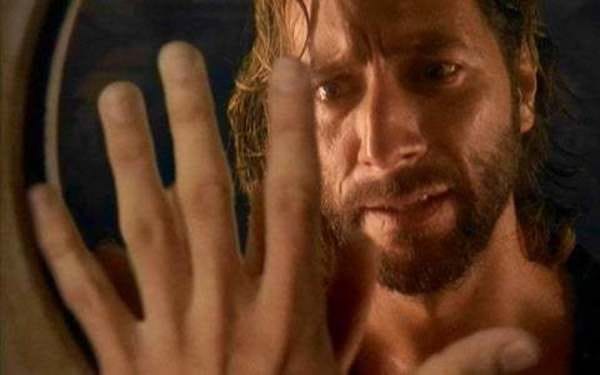
Note: this essay was originally published on Revue on February 20, 2022.
LOST times, my friendlies. By now you know the deal. If not, read here.
You all? Everybody? This is the one.
Let’s tie things together.
The first 5 installments involved close reads of a few episodes, detailing the nature and relationship of the two beings at the heart of LOST’s buried backstory, entities I’m calling The Island and The Adversary.
The short of it is: The Island is engaged in an experiment, whereby it brings people to itself, to prove that people are worthy. The Island wants to prove this to The Adversary, who believes humans are irredeemable. The Island opts not to interfere with the experiment, and instead uses human intermediaries as a conduit for its will. The Adversary interferes like crazy all over the place. Even though The Island has dominion over The Adversary, it appears to allow this, which is interesting.
I wrote 5 installments when I could have just written that paragraph. Oh well.
Now, let’s leap all over the episodes all higgledy-piggledy, and spend a little time thinking about some of the other most important remaining aspects of the buried understory.
Then, next time, a brief statement of belief: the story version of all this.
And then—finally, finally, after 7 installments worth of preamble, armed with information and best guesses—we’ll get into the main story.
I’m thinking at the very least, we’ll want to touch on the physical nature of the island, and the spiritual nature of the island, and the time travel shit.
And … yep, there’s no getting around this: LOST is a show with time-travel shit in it. For a lot of people, this is where they checked out. But time-travel shit? That’s my bread and butter. That’s where they hooked me forever.
Let’s touch on the nature of the island, and then tackle the time-travel shit.
We’ll do that by looking at things in chronological order, from the perspective of The Island. ¹
O B S E R V A T I O N
A long long long time ago, there was The Island, and then the universe, and then the Adversary, and then the Earth, and then the island, and then people, probably in that rough order. But anyway, they all were, a long long long time ago.
Some time later, but still a very long time ago, somebody put a hole into the floor of a chamber we heard Mother call “the Heart of the Island.” This is an interior discoverable by entering the debouchment I’ve termed “the Robert Kincave,” a pun in which I take an unseemly amount of pride.
Anyway, somebody punched a hole into the floor, beneath which is an incredibly intense light. Somebody also put a large stone on top of the hole leading into the light. It may have been different somebodies digging holes and plugging it, might have been the same somebody. We don’t know. There are markings on the stone in cuneiform, which suggests that these people were Sumerians, or else later they became Sumerians after they left the island. That would be the world’s oldest known written language, by the way. Around the hole and stone plug is a pool. The pool’s water flows to viaducts (don’t start, Groucho fans). We aren’t told to what destinations the viaducts carry the water. Somewhere, that’s for sure.
If you remove the stone from the hole, bad things happen for a few hours. Then, unless the stone is replaced, it seems quite likely that the light pulls the universe into itself and everything ends. So that’s a thing.
At some point, we know that The Island decided the island needed a protector. This hole in its heart is probably why.
There are also a lot of never-identified skeletonized bodies down there by the hole, so I’ll just observe that The Adversary appears to have been busy with humans for quite a while.
Some time after that, there were Egyptians on the island—or, at least, there were people who either had been Egyptians and been informed by their culture, or else after the island they became Egyptians, and hugely informed Egyptian culture. Either way, they built a lot of Egyptian stuff, including a temple, which has a pool, and that’s sort of interesting to think about, if you’re still wondering where those viaducts at the Heart of the Island go. They also built a big honking statue of the Egyptian fertility goddess Taweret. And they also chiseled some hieroglyphs onto a lot of things, including on the stone cork, above the cuneiform.
There is reason to believe that, from this point on at least, there are people living on the island continuously. We will see that there is a group living in the Temple who appear to be indoctrinated into a deeper understanding of the island, and there seems to be a sense of long tradition about them, and a solitude from any other island dwellers. People can live on the island for years without ever finding them or the Temple.
Much more about them someday, I bet. But not today.
And at some less certain point but probably after that, Mother arrived by some sort of accident. She became the protector of the island’s light, and also there’s ample evidence she became the black smoke. We don’t know how but we see how she passes both on, so probably something a little like that. We got into all that last time. Hello, Mother.
And at some point after that, a group of people arrived by some sort of accident, though shipwreck seems likely. Among them was a pregnant women named Claudia, who gave birth to a boy named Jacob and a twin we’re calling Brother. Then Mother killed Claudia. Bye, Claudia.
About forty years later, Brother decided to team up with the other castaways to dig holes into the light at the Heart of the Island, and to use a system to move the water and the light in order to try “some very interesting ideas.”
About forty seconds later Mother proceeded to destroy all that nonsense, and then ceremonially made Jacob the island protector.
About forty hours later, Brother killed Mother. Careful with that axe, Eugene.
About forty seconds later, Jacob beat Brother up and threw him into the Heart of the Island, and then Brother was dead and also he was the smoke, which is to say, The Adversary. And that situation lasted for quite a while.
And somewhere in there, other people came to the island and The Adversary got them to create his system to move the water and the light. We know this, because, as we will eventually observe, there’s a big wheel connected to a system at the Heart of the Island, which channels the water and the light, and moves the island, about which more a few paragraphs from now.
At some less certain point probably after that, a group of people nobody had ever seen before appeared briefly on the island, perhaps a mile from the statue. One of them died in the arms of another, blood gushing from her nose. One of them clutched a rope that led into the ground. One of them landed painfully into a cavern beneath, where a wheel in Brother’s system was off its track. The broken-legged guy, whose name is John Locke, spoke with a figure who called himself “Christian Shepherd,” who convinced Locke to put the wheel back on track. Then all these people, except for Christian Shepherd, disappeared. (We’ll return to Christian Shepherd, but not today.)
These people were, from their own perspectives, from the future—2005, to be exact. This sort of thing may or may not be a regular occurrence on the island. But it sure can happen! It will again!
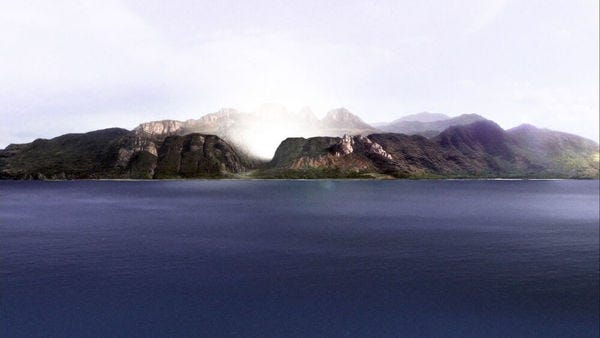
At some point after that, in an episode we’ve already covered, Ricardo arrived in a shipwreck that also served as a statue-wreck. Hello, Ricardo. Goodbye, statue.
Years passed, as years are suspected to do.
And then in 1954, the U.S. military came to the island. They brought a nuclear bomb, as militaries do. They got killed all to hell by a group of apparently longtime island-dwellers, guided by Ricardo, who was by then going by “Ricardus,” so we’ll call him that.
Then an unbroken-legged Locke and a bunch of the same people we’ve seen before—including the woman who died decades or centuries before—appeared on the island. Locke walked into the camp of island-dwellers and told Ricardus and his group things that made Locke seem very important. (I’ll get into details when and if we get to these episodes, else we’ll be here forever.) Locke and the strangers then disappeared right in front of them. On advice from these strangers, Ricardus’ group buried the bomb.
Somewhere after this, the strangers appeared again and Locke started climbing down a well leading to a cavern that contained the wheel in Brother’s system, which was out of its track. Then they disappeared.
Over the years, Ricardus took a distant and watchful interest in a young boy named John Locke, as, one presumes, did the rest of his group of island-dwellers. The boy proved completely unexceptional. Many boys do.
A couple decades later, a scientific expedition with a sort of new-age ethos and corporate backing discovered the island and set up shop there. They discovered places on the island where metal behaves strangely. When they found one of those places, they would dig.
Eventually this expedition—known as the Dharma initiative—met some of the appearing/disappearing strangers, though not Locke. One of these strangers was a scientist named Faraday who helped Dharma learn many things. One of the things Faraday’s team discovered is that the light at the center of the island likely contains negatively charged exotic material, which (according to Lostpedia) is a real-world physics term for “a type of undiscovered matter that is hypothesized to exist” having “bizarre properties” that “manipulate time and space,” and which may create or invert gravity. Which is interesting.
Much more about Faraday some other time, I bet.
Some time after this, four other strangers appeared and wound up in the Dharma compound in the 1970s. They were, from their perspective, from the future—2007, to be exact. They had been on an international flight from LA to Guam—Ajira 316. They had not been expecting to arrive in Guam. They’d been expecting to find themselves on the island. They were not expecting to come to the island in the 70s. We’ll find out they disappeared right off their flight. Here they are!
These four were well-known to the other strangers, who had by this point fully integrated into Dharma as trusted members of the initiative. A lot of stuff happened then, but the most important are:
Dharma made a hatch for their hole. The serial number on the hatch was 4815162342.
Dharma dug too far, piercing the light at the Heart of the Island, which created an incident known as The Incident, whereby the universe nearly ended. It was prevented by our appearing/disappearing strangers old and new, who retrieved the buried nuclear device from the island dwellers and set it off right on top of the site of The Incident.
The strangers all disappeared before the nuke could kill them. The nuke exploded underground so it didn’t kill everyone else. (Guys, it’s OK. It’s a TV show. Let’s move on.)
Somehow the detonation moved The Incident back onto the safer side of its event horizon, into a sort of manageable statis whereby its energy would build and could be released. We know that it allowed Dharma to contain The Incident, because they contained it. They built a station on the site of their dig, on top of the breach, and they managed The Incident by means of a system whereby an operator entered a sequence into a computer, which triggered the release of energies built up by this manageable statis.
The sequence was the hatch’s serial number, with spaces. 4 8 15 16 23 42.
The sequence had to be entered every 108 minutes, which happens to be the sum of those numbers. Quite a coincidence!
The years passed. Years do that, I’m told.
A succession of different people found themselves charged with entering the sequence, to prevent a further collapse of the world and maybe the universe. This duty continued, outliving the existence on the island of the Dharma Initiative, whose work had necessitated it. Eventually the person charged with this duty became a travelling Scotsman named Desmond Hume, who had many connections already to the island, though he wasn’t aware of that.
We should pay attention to this Desmond.
The years continued to pass just like years.
One day, a time-jumping Faraday appeared at Desmond’s hatch and gave him a piece of crucial information, then disappeared. We’ll get to what that information was someday. The important thing to note is that Desmond getting that information allowed him to remember getting it. That’s not particularly unusual. What is unusual is that it let him remember the information years before he received it, because by the time he remembered it, his consciousness was moving around time like a stray pinball.
(Look, this is a whole other entry for another day. Just go with it for now.)
Some time after this, Desmond neglected the sequence, and the island started to fall apart. Luckily enough, Desmond managed to enter the sequence in time to prevent global/universal catastrophe.
Before he did, though, the forces unleashed tore apart a passing airliner—Oceanic flight 815. Despite the fact that the crash happened high in the air at great velocity, there were a highly unlikely number of survivors. Among these survivors were several of our time-jumping strangers, including John Locke. From the perspective of these survivors, they were on the island for the first time, and the island and those living on it were huge mysteries.
From the perspective of the Island, and the Adversary, many of these survivors had been here many times before, stretching far back into the past. Also, to the perspective of some of the people living on the island (like Ricardus), the presence of certain individuals (like John Locke) among these new arrivals represented continuances of deep and long-standing mysteries.
These people, we will eventually learn, had been drawn to the island by The Island, mediated through Jacob. And, though almost none of them perceived it, we will from our perspective as viewers eventually observe that the numbers 4, 8, 15, 16, 23 and 42 are mysteriously instrumental in their fates in ways that could be seen as bizarre coincidence, or as some sort of cosmic or divine pattern, depending on our already existing beliefs and dispositions.
And then for about 3 years after that, about 95% of the plot of the show LOST happened. We’ll get to it.
But somewhere in there, our heroes discovered the hatch and Desmond, and then took over his sequence-entering duties. And eventually, the sequence was purposefully neglected (by John Locke, actually) past the point of return, forcing Desmond Hume to turn a key in a device he’d been told was a “reset,” which, it seems, released all the energy at once, and exposed Desmond entirely to the light at the Heart of the Island … and this act somehow saved the island from destruction.
And for months after this, while on the island, Desmond Hume discovered he could see possible futures, and alter some possibilities, and thereby learned that some events are unmovable—that is, constant—and while he might change the details of these events, he was helpless to avoid their fated arrival.
Eventually Desmond Hume reached a point where he found his consciousness shifting chronologically within his body between different points in time and different points of possibility within his life, and experiencing things that happened years before, and even possibilities that had never happened. Also, he discovered that his choices were being carefully monitored by people who were very aware of the island, and that the only way to preserve his sanity and find his way in time was to discover his Constant—the one factor that existed in all his realities. It turned out his Constant was his true love, Penny, and he found her, and it’s honestly one of the most awesome things ever broadcast on TV, and we’ll get there.
About a day after this, a man named Ben Linus (and you better believe there’s more on him later) turned the wheel in Brother’s system, throwing it off of its track, and starting all the time jumping for certain appearing and disappearing strangers that would occur after and before he did that until John Locke would finally fix it, hundreds of years prior. ²
Also, turning the wheel changed where the island was in space and possibly time, relative to planet earth. This made it seem to move, from the perspective of observers outside its field.
And during all this, the time-jumping strangers, who are strangers to us no longer, would occasionally appear and disappear, mostly unnoticed by those whose chronological relationship with the island was more straightforward. The only person who seemed to be aware of all this, and even at times to be guiding it, was the Adversary.
Finally, the Adversary, who eventually took on the persona of John Locke, tried to free himself by destroying the island, and also the universe. He failed, thanks to our heroes. (Spoilers!)
And sometime, decades or centuries or more likely millennia after that, the Island was destroyed, and so, we presume, was the universe.
And some time after that, people, along with others with whom they shared their lives’ greatest purpose, found themselves in a sort of sideways reality, leading lives similar but different to the lives they had led, a reality which they had created in collaboration with one another and with the light at the Heart of the Island.
The people awakened to this reality. Then they all came together.
And then the cohort of people who collaborated to make that reality moved on together, into whatever comes next.
This happened to our heroes.
For all our heroes, there was one person who was able to fully perceive this reality for what it was and awaken the people to it. That person was Desmond Hume.
And then it ended. We’re told it only ends once.
Wow. That’s a lot.
Let’s take a deep breath.
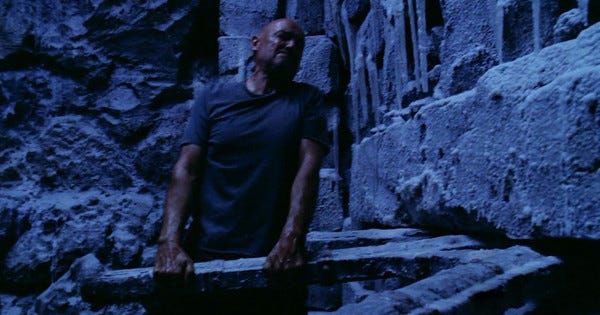
There are too many things to observe to hope to list them all. As there’s plenty of time to circle back to others, I’ll just observe the four I really want to focus on.
1. As previously established: The underlying conflict is a contention between two godlike entities, The Island and The Adversary.
The Island, who has dominion over The Adversary, holds a perspective that suggests It sees this contention less as a conflict, and more as a process with a single ending, with progress as a goal. One might do well to think of an experiment.
The Adversary, who resents the constraints of that dominance, sees the contention as an endless cyclical argument over the worthiness of humanity, or over humanity’s ability to improve and become better than it is, and its goal is simply to end the argument by ending reality.
The plot and themes of LOST will present us with many parallels to the idea of experiment, but here are some particularly relevant ones:
An experimenter tends not to tamper with the process, if they are truly interested in pure results. And we do see that The Island, though its power seems infinite, chooses non-interference, operating through intermediaries who themselves choose non-interference, conveying their parameters through intermediaries of their own.
Experimenters tend to run as many different iterations as they can within their own limitations and resources, attempting as many different permutations as they can, to generate the richest possible pool of data, and to thereby draw the most accurate possible conclusions.
I’d observe that an experimenter with limitless time and resources would run every possible iteration to capture every possible permutation. An iteration being a running of the full experiment from start to finish, a permutation being a novel string of occasions or configurations within an iteration.
And each permutation would need a control—a Constant.
And there would need to be a Constant across all permutations, too.
2. In physical space, the light acts as a cosmic nexus, which exists outside of space and time, connected to space/time by many points of confluence, but not governed by it. The light appears to have gathered physical matter around itself, which we call “the island.”
This allows the island to exist relative to space/time in non-chronological ways, in relation to the Earth and even in relation to individual people.
Two individuals entering the island’s field inside an airliner, for example, might find themselves in two different locations chronologically relative to the island. From the perspective of the one who finds themselves in a chronological location separate from the airliner, it might seem as if they teleported onto the island, or jumped through time. From the perspective of one who stayed aligned with the airliner chronologically, it might seem that the other disappeared.
This leads to hosts of possibilities I won’t mention³, in case I ever get a chance to write LOST Season 7.
3. The light itself functions as a spiritual nexus, (probably among other things) in which consciousnesses, separate from space and time, gathers, collecting its experience, and then moving to some other state.
This gathering appears to be a culmination (though for the consciousnesses, not a conclusion). It appears to have been, in some way, the whole point.
4. Something about the cosmic material that exists within the light allows not only movement across space and time, but across possibility. The Island appears to be able to control possibility as easily as you or I would control the shape of modeling clay. To the danger of his sanity, Desmond Hume becomes an entity able to perceive not only movement through time but through possibility, or at least some possibilities.
The clear suggestion is that more than one possibility exists, and exposure to the matter within the light at the Heart of the Island permits possibility to be accessed by a consciousness that otherwise could not.
There is little reason to believe, based on what we’re shown, that there isn’t more possibility that Desmond Hume is unable to perceive, any more than there is any reason to believe that there are not more mountains we cannot see on the far side of the one we can see.
The existence of a mountain doesn’t guarantee more mountains, but it suggests the likelihood of more mountains.
The existence of a possibility doesn’t guarantee other possibilities, but it suggests the likelihood.
There is little reason to believe, based on what we’re shown, that all possibility doesn’t exist.
This might allow one iteration of reality to stop existing (or stop being perceivable), while others continue to exist (or become perceivable), depending on the perspective of the observers.
Or, as Desmond often says: See you in another life, brotha.
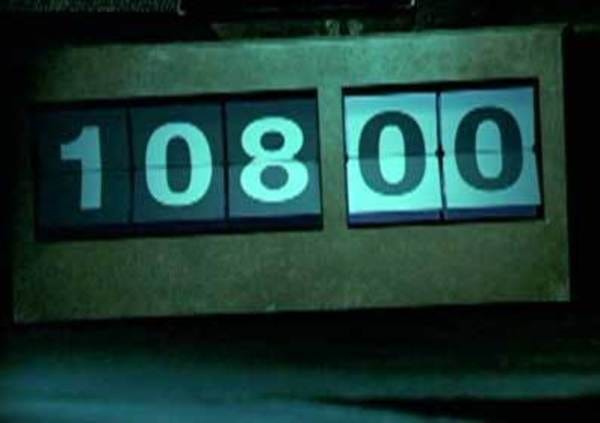
B E L I E F
These are the conclusions I believe fit the observations made.
1) I believe the Island is conducting an experiment, which is the universe. This experiment has infinite permutations within infinite iterations. Every single possibility that can happen, eventually does.
I think what happens when the light is inevitably pierced and the island is inevitably destroyed is probably the end of the universe, and also the creation of another. The light draws the universe to itself, compressing all matter down to a single point.
And then starts again.
One might do well to think of the Big Bang.
Every singularity is identical. Every expansion and collapse is different.
The data is gathered. Then, another iteration.
I believe The Island would find this all very interesting.
2) I believe the controversial Season 6 Sideways universe that we see at the end of LOST equates, in the experiment metaphor, as a delivery of findings by each permutation and each iteration at a single culmination—which is the conclusion of the vast experiment that is the culmination of all possible universes: a singularity.
Which suggests to me that, rather than infinite possibility eradicating meaning because everything that can happen does, every permutation of possibility becomes infinitely valuable … because each permutation is (to speak experimentally) the data, and the data is the whole point of the experiment.
Also, it seems not all data is equally valuable. So, you have choice. Here’s the choice: What data will you choose to be?
3) I believe that Desmond Hume is the Constant of the permutations we observe within the plot of the show LOST.
4) I believe that the Constant of the entire experiment is the entity I’ve been calling The Adversary.
I believe that, just as Desmond’s position as Constant within his iteration of reality allows him a broader perception of possibility and time, which makes him seem superhuman to other people, but is nevertheless limited as regards all of the permutation of reality he’s in … so the Adversary’s position as Constant of each iteration of the experiment gives him broad perception of possibility and time across this iteration of reality, which would seem godlike to a human … but is still limited as regards the entire experiment.
5) I believe that the subject of the experiment is indeed a question of worthiness, of the question “are you capable of change and improvement?” But I don’t believe it’s only humans who are the subject of the question. I believe the constant subject of that inquiry is not only humanity, but also The Adversary.
This would explain why The Adversary is allowed to meddle with the experiment, among other things: because it is the experiment.
I believe that The Adversary is meant to serve the function in the experiment we see the human Jacob functioning: an intermediary between The Island and humans.
I believe we are observing one of many iterations in which The Adversary is in contention with, rather than in cooperation with, The Island, has rejected Its role, and has formed a plan against the Island’s experiment.
And I think that its plan involves using its abilities to perceive time and possibility to manipulate many people into doing its will.
I believe its primary tool for enacting this plan, during the events we will watch at least, is the Oceanic survivor most thirsty for purpose and meaning: John Locke.
6) What iteration of the experiment are we watching? I’ll take a guess. I guess that it is iteration number … four billion, eight hundred fifteen million, one hundred sixty-two thousand, three hundred and forty-two.
That’s 4,815,162,342, by the way.
4 8 15 16 23 42
L O S T
NEXT TIME: Let Me Tell You A Story
____
¹ Caveat: since I can already tell this is going to be a long one, I’m not going to reference video from the dozens of episodes needed. Instead we’re going to be referencing my brain’s main ability, which is to remember story details to a freakish degree, yet still forget to empty the dishwasher. Errors here will be noted and corrected later, as far as you know.
I’d also be remiss if I didn’t mention that my old buddy Mike actually re-edited the entire show in island-perspective chronology, creating the popular fan site Chronologically LOST.
² This sentence is both why I adore this show and others hate it, and why I fully understand both positions.
³ Or maybe someday I’ll give the lovely sponsors of this newsletter my musings.
_____
A.R. Moxon is the author of The Revisionaries, which is available in most of the usual places, and some of the unusual places. He puts Baby in a corner.

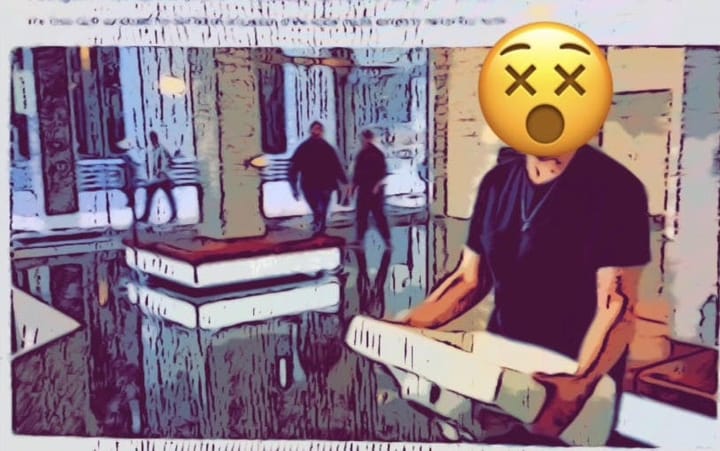

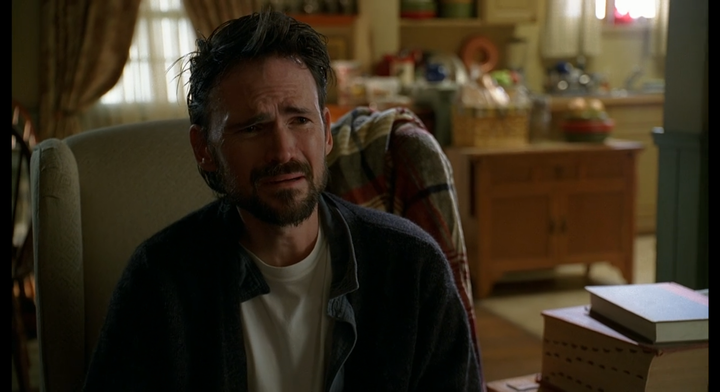
Comments ()